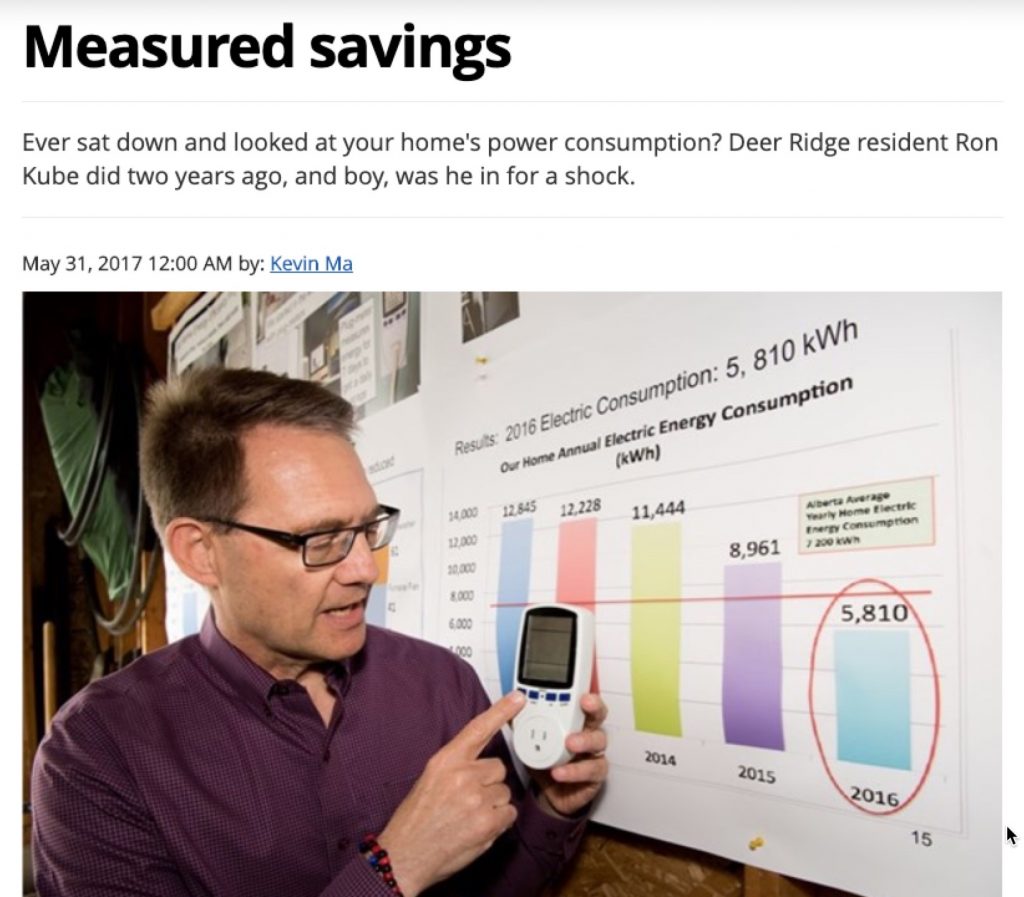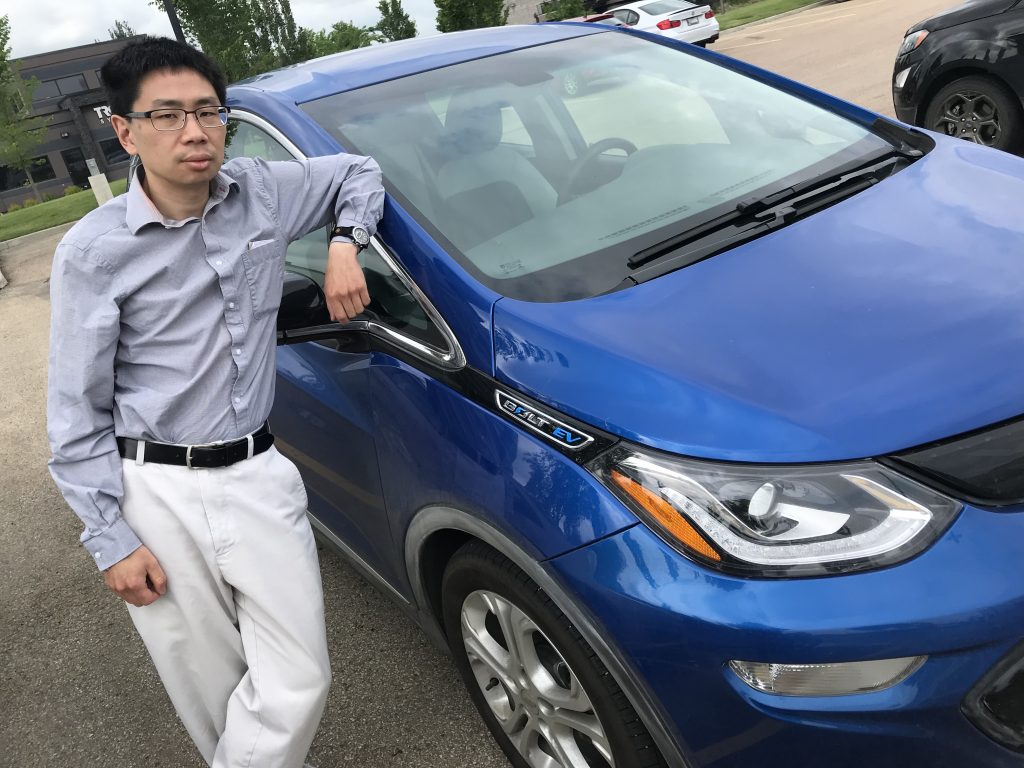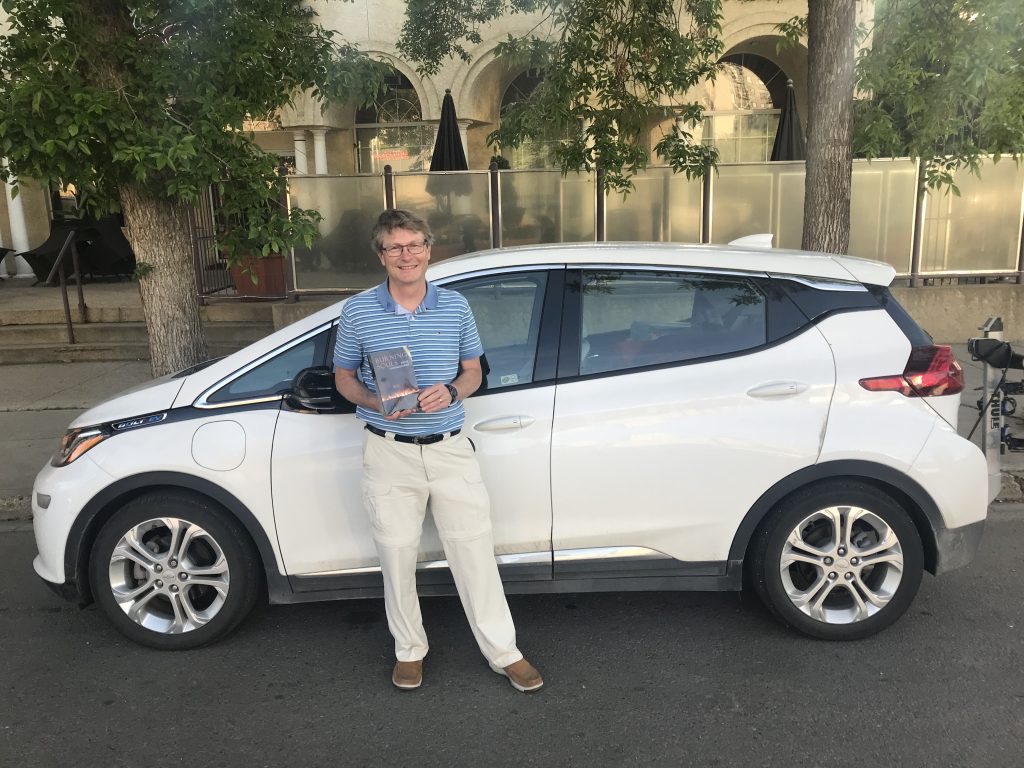By David Dodge
It took more than a decade, but Kevin Ma finally got his electric car.

A veteran of the environmental beat, Ma is a familiar voice to us enviro-heads in the Edmonton Metro Region. He has a long-standing passion for all things green and efficient. Back in 2006, his first day at the St. Albert Gazette, the editor asked him about his interests, and he was quick to fire back: “Is anyone doing the environment? No? Give me that!.”
“The first big environmental story I would have done for the Gazette would have been this three-parter on the Sturgeon River,” says Ma adding the topic later turned into his masters thesis. “Ever since then, I’ve [had] a death grip on the beat.”
While researching, Ma learned about the work of the North Saskatchewan River Watershed Alliance along with that of Roger Belley, advocate for the yellow fish road program. They inspired Ma to turn a critical eye towards the Sturgeon watershed, which turned into an entire summer spent looking into water issues. But then came a bigger problem.
“You spend all summer long climbing this massive steep hill and you get to the top of it and you see there’s this giant mountain behind it called climate change,” says Ma.
“It all boils down to two things: economics and energy. If you solve where you’re getting your energy from…you solve the problems of global heating and runaway climate change.”

Climate Change opened a Pandora’s box
This got Ma wondering: “How can I help my readers understand what they can do about climate change?”
“Inevitably they all came back to energy: re-insulating your home, improve energy efficiency, get more efficient transportation and electrification. After all, electricity is much easier to get from a green source than pretty much any other form of energy.”
Ma concluded the most efficient vehicle he could own was an electric car. But back in 2007, the only available option for him was a Tesla.
“I’m like, I can’t afford a Tesla so let’s get a hybrid, a Honda Civic hybrid.”

Ma was a patient man
It wasn’t until a decade later that Ma started looking at pure electrics again.
“[Prior to 2016], B.C. and Ontario were the places that had all the incentives for the electric car, so all [of them] were going through those dealerships.”
He determined he’d need a minimum 300 km range from his car to do his job and the Chevy Bolt fit the bill. But then came another challenge: despite numerous Facebook posts looking for a Bolt to test drive close to home, he eventually had to trek all the way to B.C.!
The Bolt – an answer for the one-car family
Ma was very practical about the decision. “If you just want a car that goes and saves you money and doesn’t destroy the planet every time you start it up go for anything you like. For me the Bolt was the right choice.”

David Chernushenko traveled across Canada in his Chevy Bolt electric vehicle on a book tour promoting Burning Souls a climate thriller. Photo David Dodge, GreenEnergyFutures.ca
A Chevy Bolt can go for 383 km between charges, but Ma says under ideal conditions he can push it to 500 km. Although, he admits it can fall below 300 km in February. Ma says he’s prone to worrying about running out of range, but as most EV owners learn, nearly every day he leaves home fully charged.
“You plug the thing in and walk away,” says Ma, who lives in a condo and uses a stock-standard 120-volt plugin to charge his car, which will accumulate enough power for 150 km of driving in about eight hours.
“If you’re charging this thing every night it’s virtually impossible to run out of juice and even if you do, now they’re many places to charge in the field,” says Ma.
One particular challenge for Ma is being at the “mercy of the condo board” when it comes to having access to a plugin and then arriving at a fair rate for charging his vehicle.

Practical, fun to drive
“Compared to my [hybrid) I’m loving it,” says Ma. It “handles like a dream,” has an “incredibly small turning radius” and “starts up instantly.”
EVs have about one-third of the moving parts of an internal combustion vehicle, so Ma spends about $2When it comes to operating costs Ma says he spends about $40 per month on “fuel” and about $2 on maintenance.
From EVs to microplastics

These days Ma is researching the impact of microplastics. “Every single chunk of plastic pollution is eventually going to break down into these tiny little microscopic chunks of micro plastic.”
“It’s one thing to say ‘those little six-pack rings are choking the seagulls. That’s so sad,’” says Ma. “But what about the fact that right now you and I, sitting in this room are breathing in plastic because there is so much of this junk in the air.”
“There is a study that found that basically every week in Europe you are eating a credit card worth of plastic,” says Ma. If you are a fan of bottled water you could be ingesting a lot more.
Kevin Ma’s decision to buy an electric vehicle was largely based on his 10-years of work covering the environment. Happily, the hassle of waiting almost a decade for the right car to come on the market and then struggling to find one to test drive are challenges of the past already.
Thanks to federal rebates Albertans are starting the look at electric vehicles and we’re starting to hear more about them every day.
Note: In the interest of transparency, the St. Albert Gazette was the first newspaper in the Edmonton Metro region to have an environment reporter––that reporter was yours truly in 1981. Learn more about EVs at ATCO’s Charging Ahead page.





